Related Research Articles

The Afroasiatic languages, also known as Hamito-Semitic or Semito-Hamitic, are a language family of about 400 languages spoken predominantly in West Asia, North Africa, the Horn of Africa, and parts of the Sahara and Sahel. Over 500 million people are native speakers of an Afroasiatic language, constituting the fourth-largest language family after Indo-European, Sino-Tibetan, and Niger–Congo. Most linguists divide the family into six branches: Berber, Chadic, Cushitic, Egyptian, Semitic, and Omotic. The vast majority of Afroasiatic languages are considered indigenous to the African continent, including all those not belonging to the Semitic branch.

The Chadic languages form a branch of the Afroasiatic language family. They are spoken in parts of the Sahel. They include 150 languages spoken across northern Nigeria, southern Niger, southern Chad, the Central African Republic, and northern Cameroon. The most widely spoken Chadic language is Hausa, a lingua franca of much of inland Eastern West Africa.

The Cushitic languages are a branch of the Afroasiatic language family. They are spoken primarily in the Horn of Africa, with minorities speaking Cushitic languages to the north in Egypt and the Sudan, and to the south in Kenya and Tanzania. As of 2012, the Cushitic languages with over one million speakers were Oromo, Somali, Beja, Afar, Hadiyya, Kambaata, Saho, and Sidama.

Hausa ; Ajami: هَرْشٜن هَوْسَ) is a Chadic language spoken by the Hausa people in the northern parts of Nigeria, Niger, Ghana, Cameroon, Benin and Togo, and the southern parts of Niger, Chad and Sudan, with significant minorities in Ivory Coast.
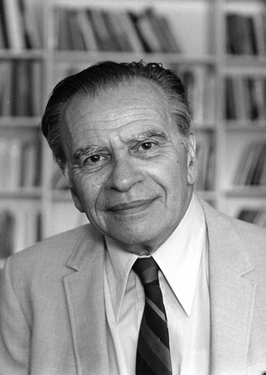
Joseph Harold Greenberg was an American linguist, known mainly for his work concerning linguistic typology and the genetic classification of languages.
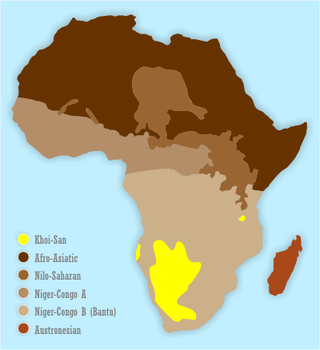
The Khoisan languages are a number of African languages once classified together, originally by Joseph Greenberg. Khoisan is defined as those languages that have click consonants and do not belong to other African language families. For much of the 20th century, they were thought to be genealogically related to each other, but this is no longer accepted. They are now held to comprise three distinct language families and two language isolates.

Niger–Congo is a hypothetical language family spoken over the majority of sub-Saharan Africa. It unites the Mande languages, the Atlantic-Congo languages, and possibly several smaller groups of languages that are difficult to classify. If valid, Niger-Congo would be the world's largest in terms of member languages, the third-largest in terms of speakers, and Africa's largest in terms of geographical area. It is generally considered to be the world's largest language family in terms of the number of distinct languages, just ahead of Austronesian, although this is complicated by the ambiguity about what constitutes a distinct language; the number of named Niger–Congo languages listed by Ethnologue is 1,540.
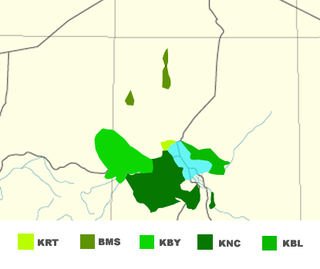
Kanuri is a dialect continuum spoken in Nigeria, Niger, Chad and Cameroon, as well as by small minorities in southern Libya and by a diaspora in Sudan.

The Songhay, Songhai or Ayneha languages are a group of closely related languages/dialects centred on the middle stretches of the Niger River in the West African countries of Mali, Niger, Benin, Burkina Faso and Nigeria. In particular, they are spoken in the cities of Timbuktu, Djenné, Niamey and Gao. They have been widely used as a lingua franca in that region ever since the era of the Songhai Empire. In Mali, the government has officially adopted the dialect of Gao as the dialect to be used as a medium of primary education.

The Mande languages are a group of languages spoken in several countries in West Africa by the Mandé peoples. These include; Maninka, Mandinka, Soninke, Bambara, Kpelle, Jula, Bozo, Mende, Susu, and Vai. There are around 60 to 75 languages spoken by 30 to 40 million people, chiefly in; Burkina Faso, Mali, Senegal, the Gambia, Guinea, Guinea-Bissau, Sierra Leone, Liberia, Ivory Coast, Mauritania, Ghana and also in northwestern Nigeria and northern Benin.
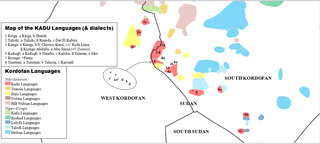
The Kadu languages, also known as Kadugli–Krongo or Tumtum, are a small language family of the Kordofanian geographic grouping, once included in Niger–Congo. However, since Thilo Schadeberg (1981), Kadu is widely seen as Nilo-Saharan. Evidence for a Niger-Congo affiliation is rejected, and a Nilo-Saharan relationship is controversial. A conservative classification would treat the Kadu languages as an independent family.

There are over 525 native languages spoken in Nigeria. The official language and most widely spoken lingua franca is English, which was the language of Colonial Nigeria. Nigerian Pidgin – an English-based creole – is spoken by 30 million people in Nigeria.

The West Chadic languages of the Afro-Asiatic family are spoken principally in Niger and Nigeria. They include Hausa, the most populous Chadic language and a major language of West Africa.
Mbuko is an Afro-Asiatic language spoken in the canton of Doulek, Méri subdivision, department of Diamaré, and also in parts of the canton of Serawa, Tokombéré subdivision, department of Mayo-Sava, in the Far North Region of Cameroon.
Bole is a West Chadic language spoken in Nigeria. Dialects include Bara and Fika, spoken in the Fika Emirate.
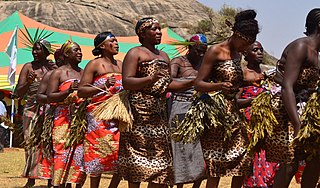
Ron is an Afro-Asiatic language cluster spoken in Plateau State, Nigeria. Dialects include Bokkos, Daffo-Mbar-Butura, Monguna/Manguna (Shagau),. Blench (2006) considers these to be separate languages.
Polci is an Afro-Asiatic language of Bauchi State, Nigeria. It is part of the Barawa cluster, which is in turn part of the West Chadic language family.

The Ron, Ronic or Ron–Fyer languages, group A.4 of the West Chadic branch of the Afro-Asiatic language family, are spoken in Plateau State, north-central Nigeria.
Anne Storch is a German linguist and professor of African studies at the University of Cologne.
Norbert Cyffer is a German-Austrian linguist and Professor Emeritus of African Studies at the University of Vienna. Cyffer is primarily interested in African languages and linguistics, particularly the Saharan languages of the Sahelian region. His research areas include morphology, syntax, language contact, sociolinguistics, typology, and applied linguistics.